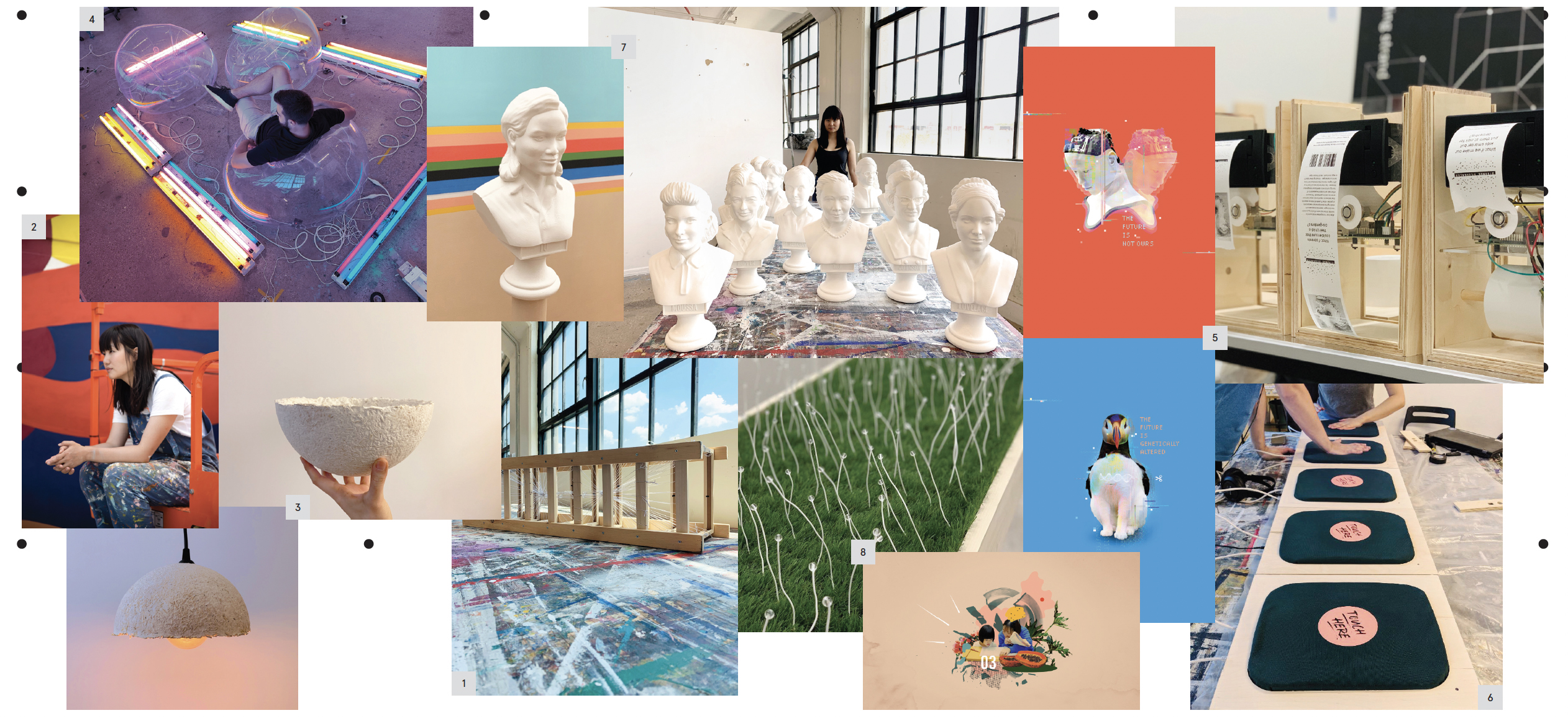From the pages of Prattfolio, this article is part of Solved, a section highlighting the problem-solving process in the real world, from the perspective of alumni in the field. The Fall/Winter 2019 issue features the work of multidisciplinary artist Amanda Phingbodhipakkiya, MFA Communications Design ’15, who uses her background in neuroscience and art and design practice to illuminate scientific wonders and explore nature’s mysteries. For her exhibition Connective Tissue, she created works that reveal life’s unifying forces.
The ideas:
“Much of the work revolves around play,” Phingbodhipakkiya says of the interactive exhibition, “making invisible things visible,” and highlighting the enmeshment of the natural world and human experience.
The opportunity:
An expansive 4,800-square-foot space created the potential to magnify micro phenomena to macro scale and invite visitors to participate in discoveries about the community of life.
The challenge:
Communicating complex and abstract ideas—like space-time—aesthetically presents one set of challenges, but scaling up has its own conundrums. When thinking about how to visualize the electron field, for her work There Are No Particles, Only Fields, Phingbodhipakkiya needed to figure out how to blow up a small model made with string to a 10-foot-tall piece.
A material solution came in shock cord, which could hold the appropriate tension, mounted in a specially designed frame. When printing a large wall sticker proved excessively expensive, Phingbodhipakkiya chose to marshal her mural-making experience and paint the graphic.
The work:
[De]Compose asks viewers to reconsider the lifecycle of objects, via home goods made of mycelium, the fibrous building material of mushrooms, which can be grown to make biodegradable commercial products.
Campfire’s inflatable seats and neon glow create a space for having conversations around common experiences.
Strange Sequences presents visitors with technological quandaries of tomorrow, based on discoveries of today, and asks them to choose their approach— from early adopter to skeptic—in addressing each scenario.
For Binary Outcomes, a piece highlighting how collective action builds a movement, fragments of a tune play as viewers touch parts of the work; touching all together activates the full song.
The exhibition also celebrates women’s contributions to scientific knowledge and technological advancement. In the Company of Great Scientists uses 3-D printed busts to honor women in STEM whose work has changed their fields and society.
Rest in Prowess collects narratives from around the world that remember heroic women, sourced via a virtual story booth and translated into digital collages, projected above beds of “neurons” of the hippocampus, the area of the brain associated with memories.
The takeaway:
“I hope the exhibition inspires visitors to wonder more, explore more, not keep things they’re curious about—things that have been tickling their minds for a while—at arm’s length,” says Phingbodhipakkiya. “I hope that because the exhibition has invited them to play in this multidisciplinary sandbox, they’re more likely to approach the unfamiliar with an open mind.”
Connective Tissue is on view at the Marjorie Barrick Museum of Fine Art at the University of Nevada, Las Vegas, through February 22, 2020.
